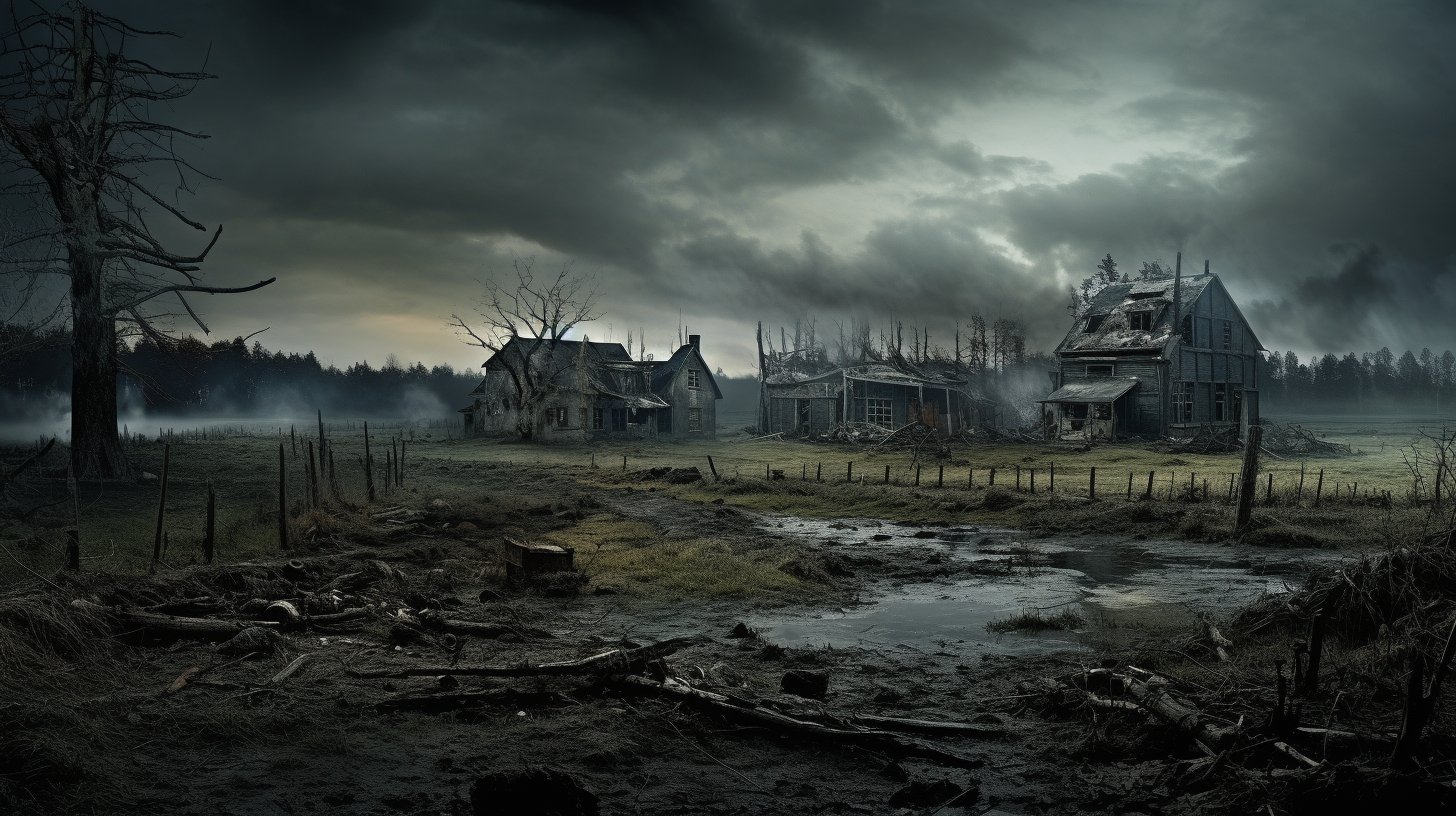Whispers of despair ride on the winds that sweep across endless fields, once bountiful, now barren. Imaginations need not stretch far to envisage the Ghost Farms of Tomorrow, where silence has supplanted the sounds of life. This is not science fiction; this is an alarm from the near future, a cautionary tableau of what awaits if the current trajectory of environmental neglect continues unabated.
The lands tell a story in their desolation. Envision the sprawling acres that fed nations, now mere dust bowls, echoing with the memories of past harvests. ‘Ghost Farms’ is more than a metaphorical idiom; it encapsulates the chilling reality of what occurs when the lifeblood of agriculture withers under the relentless strain of climate change.
We have seen the warning signs. Soil degradation, water scarcity, and extreme weather events have begun to erode the foundation of our food systems. The specter of desertification looms large, licking at the edges of our fertile grounds, with once-verdant territories transformed into parched wastelands. The phenomenon of these ‘ghost farms’ is the product of a complex interplay between environmental mismanagement and the consequences of a warming planet.
Take heed of the stories from the heartland where farmers, once proud stewards of the land, stand powerless as their fields succumb to the sterile clutches of drought and decay. ‘We till the land, we plant our seeds, but nothing grows,’ recounts a forlorn farmer, his voice a drop in the sea of growing despair. As these caretakers are forced to abandon their legacy, the soil reveals the indelible scars of overuse, a silent testament to the price of neglect.
But within this bleak picture, innovation and tradition intertwine, aiming to rewrite the narrative. Resilient farmers pioneering regenerative agriculture seek out harmony with nature, shunning the once-prevalent practices of chemical dominance that stripped the earth of its essence. These visionaries embrace biodiversity, nourishing the land with a cocktail of cover crops, and reveling in the symphony of pollinators returning to their sanctuaries.
Even as some strive to mend the fabric of our agrarian tapestry, the encroaching specter of climate catastrophes presents a challenge too great for mere human determination. With each passing season, the burgeoning gulf between what the earth can sustain and what humanity demands widens, threatening to engulf the efforts of even the most ardent environmental stewards.
Experts implore us to take notice of the avant-garde solutions being piloted in pockets of hope amidst the desolation. The revival of hydroponics, aquaponics, and other forms of soil-less cultivation hint at a future where we may unshackle ourselves from the tyranny of degraded lands. Yet, whispers the question: Is this the panacea or merely a stopgap in the crusade against the dying of the earth?
As we confront this eerie landscape of agricultural demise, the chilling realization dawns that these ghost farms are but harbingers, the advance guard of a future that could engulf all in its haunting void. It compels us to ask whether we are prepared to confront the abyss, or if we shall find the collective will to avert our gaze from the precipice of despair.
In this scenario, the choice is stark—to breathe life back into these ghost farms or to consign them, and perhaps ourselves, to the annals of history as a civilization that sowed the winds but was ill-prepared to reap the whirlwind.
The time for action has never been clearer, nor the stakes higher. We must unite in our efforts or face a world where the ghost farms of tomorrow are not just an omen but a grim reality.
